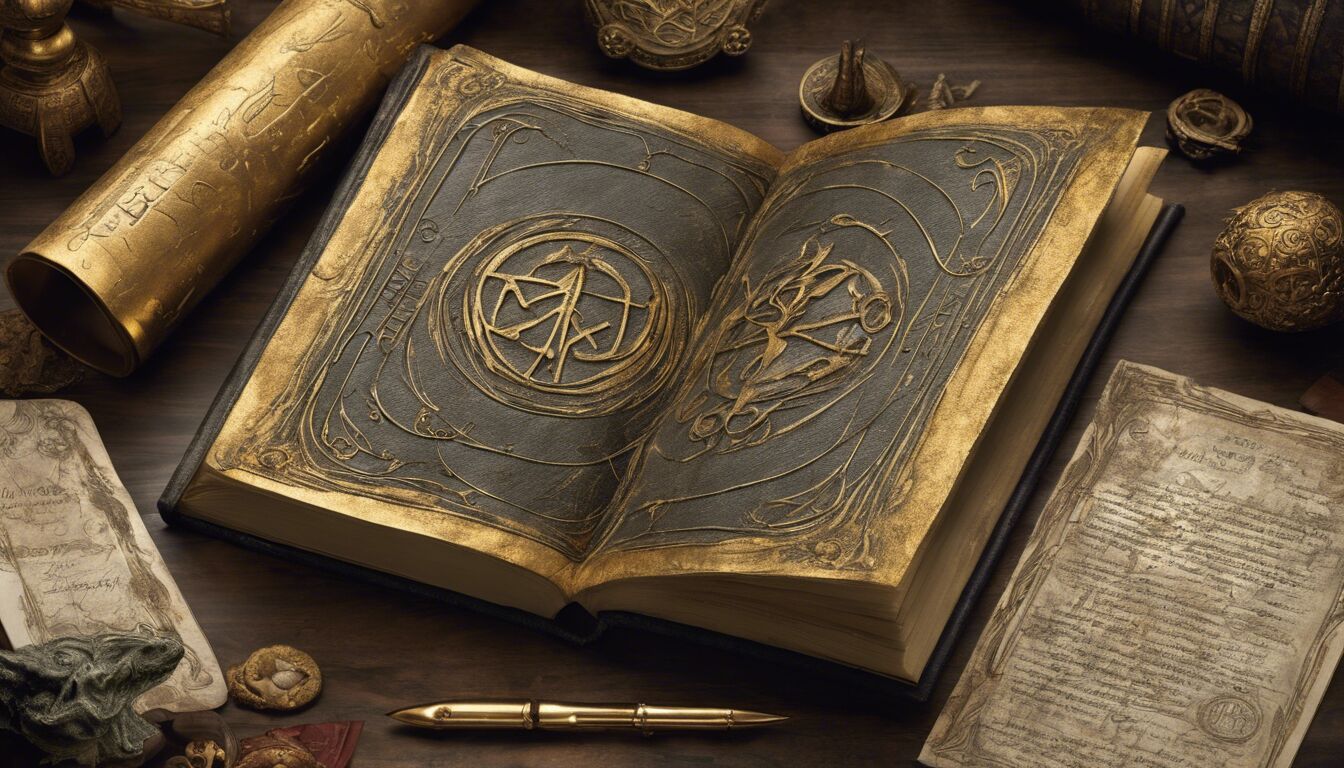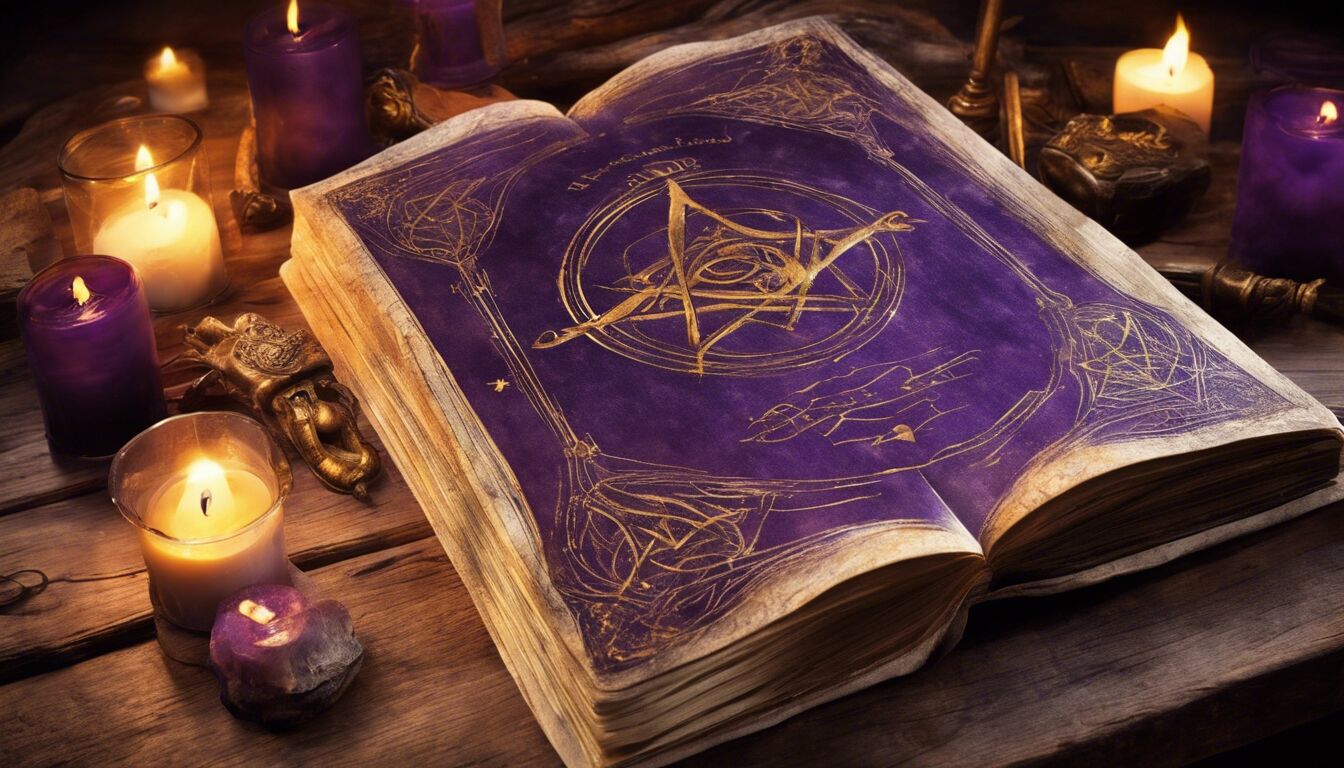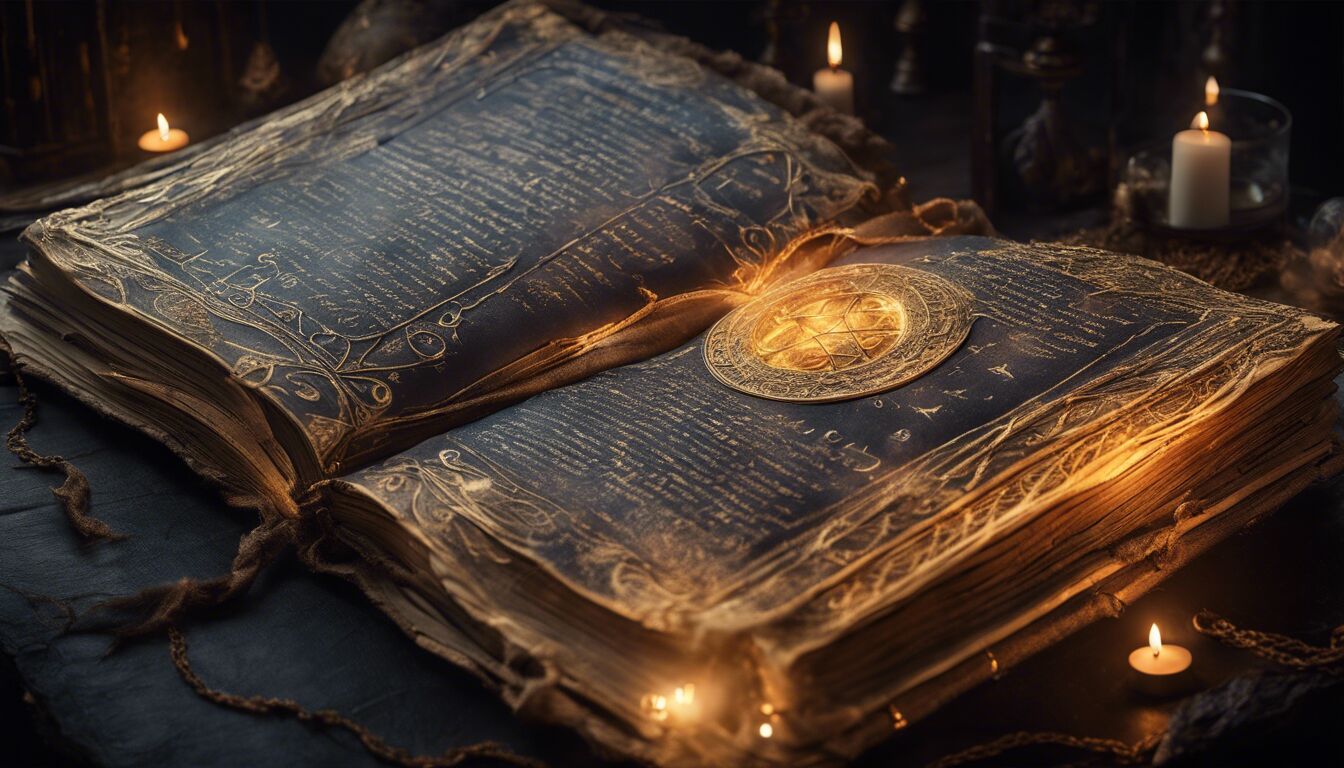blog
Best Fonts for Your Magical Tale
When it comes to choosing the perfect typeface for your magical tale, the most crucial first step is understanding the ambiance of your story. Every tale has its unique atmosphere, whether it’s an epic fantasy filled with brave knights and mythical creatures, or a modern-day urban adventure involving arcane discoveries. The ambiance of your tale should serve as the guiding star for the type of font you select. Just as setting and style dictate the tone of your storytelling, so too should they inform your choice of typefaces.
Think about the mood you want to evoke. Is your story steeped in ancient lore and timeless magic? Or does it unfold in a sleek, contemporary setting? Your selection of a typeface should reflect this. For instance, fantasy fonts can invoke a myriad of emotions, from the gothic and mysterious to the light and whimsical. The right font can help transport readers to another world, making them feel the enchantment you intend to convey with every page.
“Typography is the art and technique of arranging type to make written language legible, readable, and appealing when displayed.” Consider this principle when selecting a typeface for your magical tale. A well-chosen font does more than just present text; it shapes the reader’s encounter with the narrative, setting the stage for their imagination to take flight. Allocating careful thought to the ambiance will ensure that your typography doesn’t just tell the story; it becomes part of the story itself.
Serif fonts for classic enchantment
 Serif fonts serve as the backbone of classic enchantment, often transporting readers back to archaic eras filled with mysticism and grandeur. These fonts, defined by their small projecting features or “serifs” at the end of strokes, lend a timeless, dignified quality to your tale. Think of the grand tomes of old, the elegant inscriptions on ancient scrolls, or the dignified text in classic literature; serif fonts encapsulate that historic essence.
Serif fonts serve as the backbone of classic enchantment, often transporting readers back to archaic eras filled with mysticism and grandeur. These fonts, defined by their small projecting features or “serifs” at the end of strokes, lend a timeless, dignified quality to your tale. Think of the grand tomes of old, the elegant inscriptions on ancient scrolls, or the dignified text in classic literature; serif fonts encapsulate that historic essence.
Using a serif font can evoke a sense of tradition and gravitas, making it an excellent choice for epic stories where legacy and age-old magic reign supreme. Fonts such as Garamond and Baskerville are among the favorites for such narratives. Garamond, known for its classic Renaissance roots, brings an air of scholarly refinement, while Baskerville, with its sharp contrasts and rounded strokes, offers an elegance that’s both enduring and sophisticated.
“Good typography can move to tears, it can ignite anger, and it can evoke a sense of nostalgia.”
As you craft your tale, consider how a serif font can be woven into the very fabric of your narrative. The font choice can lend a tactile, almost tangible sense of history and heritage. Whether it’s the weathered spellbook of an ancient wizard or the royal decree scribed by the hand of a powerful sovereign, serif fonts like Georgia or Palatino give a nod to the grandeur and reverence of bygone days.
It’s also important to consider readability, especially in longer pieces. Serif fonts excel here as well, ensuring your readers can comfortably lose themselves in your story. With their age-old charm and legibility, serif fonts can turn the pages of your magical tale into a portal to another world.
Using a serif font can thus add layers of depth and authenticity to your narrative, echoing the ageless tale of magic, heroism, and legend that you seek to tell.
Sans-serif fonts for modern magic

When it comes to contemporary fantasy settings, sans-serif fonts offer a sleek and clean choice that complements the modern aura. Unlike their serif counterparts, sans-serif fonts lack the small projecting features at the ends of strokes, giving them a streamlined and minimalistic appearance. This simplicity can create a stark contrast to the elaborate and intricate world of traditional magic, bringing a fresh and updated feel to your storytelling.
Think of tales set in bustling urban landscapes where magic blends seamlessly with technology, or narratives where modern-day sorcerers navigate a world of skyscrapers and digital enchantments. Fonts like Helvetica, Arial, and Open Sans provide a sense of clarity and efficiency that matches these settings. Their clean lines and understated forms don’t just make the text readable; they enhance the perception of a more contemporary, tech-savvy universe.
One of the strengths of sans-serif fonts is their versatility. They can be styled in various weights and sizes without losing their legibility or impact. For example, a bold version of Lato can make a powerful chapter title, while its regular weight can effortlessly carry the body text, maintaining a consistent and pleasing aesthetic throughout your magical tale. This adaptability makes sans-serif fonts an excellent choice for authors looking to create a cohesive and visually appealing reading experience.
Furthermore, sans-serif fonts are often associated with modernity and progressiveness, which can be particularly effective for stories that involve new interpretations of magical concepts or innovative storytelling techniques. Using fonts like Futura or Proxima Nova can lend an air of sophistication and cutting-edge appeal to your narrative, aligning perfectly with themes of futuristic magic and advanced wizardry.
As you explore the vast array of fantasy fonts available, keep in mind the tone and pace of your story. Are your characters navigating a high-stakes technological dystopia, or perhaps unearthing ancient magic in a current-day metropolis? The right sans-serif font can subtly underscore these themes, guiding your readers’ expectations and enhancing their immersion in your tale. For instance, the geometric precision of Montserrat might suggest a world meticulously governed by both digital and arcane rules, while the humanist touch of Verdana could hint at a more organic and holistic integration of magic within modern society.
Choosing a sans-serif font doesn’t mean sacrificing personality or character in your typography. Many sans-serif fonts offer unique quirks and features that can add a touch of individuality to your text. Fonts like Raleway, with its distinctively styled ‘W’ and ‘k’, or Quicksand, with its rounded, almost playful forms, can inject a bit of whimsy and distinctiveness, while still maintaining a polished and contemporary feel.
Sans-serif fonts provide a perfect balance of modernity, readability, and style, making them an excellent choice for stories that blend the mystical with the contemporary. By carefully selecting the right sans-serif typeface, you can ensure that your magical tale not only looks visually stunning but also resonates with the current era, creating a seamless and compelling reading experience.
Script fonts for whimsical wonder
When you’re aiming to create a sense of whimsical wonder in your magical tale, script fonts can offer the perfect touch. These fonts, often characterized by their elegant, hand-drawn appearance, bring an enchanting and playful quality that can instantly elevate the ambiance of your story. Whether your narrative involves faeries dancing in moonlit glades, ancient prophecies written in delicate calligraphy, or whimsical wizards jotting down spells, script fonts can add a layer of charm and fantasy that is hard to achieve with more straightforward typefaces.
Fonts like Lobster, Pacifico, and Dancing Script are excellent choices within this category. Lobster provides a playful and bold script that can lend your titles and headers a touch of exuberance, capturing the reader’s eye with its friendly and dynamic curves. Pacifico, with its smooth and flowing lines, offers a more relaxed, beachy feel that could be ideal for tales set in magical islands or enchanted coastal realms. Meanwhile, Dancing Script, inspired by the casual and quick handwriting of modern letterers, brings a lively and informal tone that can make your narrative feel both accessible and fantastical.
When selecting a script font, it’s essential to consider both readability and the emotional tone you wish to convey. Script fonts can sometimes be harder to read, especially in longer passages or smaller sizes. Therefore, they’re typically best reserved for titles, chapter headings, or brief excerpts rather than body text. Pairing a script font with a complementary, easy-to-read serif or sans-serif font for the bulk of your text can create a beautiful balance, where the whimsy of the script draws attention without detracting from readability.
Another aspect to think about is the historical context or specific culture depicted in your magical world. Some script fonts evoke a particular time period or stylistic flair. For instance, fonts like Great Vibes or Edwardian Script can give an air of sophistication and classic elegance, perfect for high-fantasy settings with royal courts and ancient legacies. Conversely, fonts like Cookie or Sacramento, with their casual, handwritten styles, could suit a more cozy, whimsical story involving everyday magical mishaps.
“The secret to fantastic typography is, quite simply, an appreciation of detail. Every flourish, stroke, and curve adds to the narrative.”
Consider your target audience as well. Script fonts have varying levels of formality and playfulness, making them adaptable to different age groups. A font like Amatic SC, with its quirky, hand-lettered style, might be more appealing for younger readers, while something more refined like Allura might complement a tale aimed at adults.
In the world of fantasy fonts, script typefaces are a treasure trove of creativity. They allow you to break away from the conventional and introduce more personality and flair into your text. For instance, using Alex Brush for a wizard’s handwritten notes could give those elements a realistic touch, making readers almost smell the ink or see the wear of time on the parchment.
Remember, the key to an immersive magical tale lies in the details. The right script font can make your readers feel like they’ve stumbled into a world where every word is spellbound, every page a gateway to wonder. So take the time to explore, and let your imagination guide your choice. With the correct script font, your whimsical wonder will enchant and intrigue, weaving a spell that your readers won’t soon forget.
Display fonts for dramatic flair
 When it comes to adding drama and flair to your magical tale, display fonts are the perfect choice. These fonts are designed to grab attention and make a visual statement, making them ideal for key elements such as book cover design, chapter titles, or important magical incantations. Unlike the subtlety often found in serif or sans-serif fonts, display fonts are unreservedly bold, expressive, and sometimes even extravagant, bringing an element of spectacle that can be incredibly impactful in fantasy fonts.
When it comes to adding drama and flair to your magical tale, display fonts are the perfect choice. These fonts are designed to grab attention and make a visual statement, making them ideal for key elements such as book cover design, chapter titles, or important magical incantations. Unlike the subtlety often found in serif or sans-serif fonts, display fonts are unreservedly bold, expressive, and sometimes even extravagant, bringing an element of spectacle that can be incredibly impactful in fantasy fonts.
Imagine the grandeur of a magical duel or the unveiling of a forbidden spell. Display fonts can capture that high-stakes intensity with their dramatic shapes and creative forms. Consider fonts like Bebas Neue, which, with its bold and straight-edged letters, echoes strength and seriousness, akin to an ancient prophecy chiseled in stone. Alternatively, Bombing, with its explosive, graffiti-like style, could bring a rebellious and modern twist to your tale, perfect for stories centered on young, defiant wizards charting their paths.
One of the significant advantages of display fonts is their sheer variety. They come in an extensive array of styles, from the ornate and baroque to the edgy and futuristic. For fantastical settings dripping with elemental magic, a font like Metal Macabre might provide the gothic, menacing edge you’re looking for. With its sharp, spiky characters, it can suggest danger and darkness lurking within your tale. Meanwhile, a font like Lobster Two offers a more playful and ornate script, adding flourish and charm suitable for whimsical or light-hearted moments in your narrative.
Display fonts demand attention, and with that comes the challenge of ensuring they don’t overpower the other elements of your story. Use them sparingly to maintain their impact. They are best reserved for headings, titles, or other isolated text that requires emphasis. Pairing a dramatic display font with more subdued text fonts can create a visually balanced and engaging reading experience. For example, combining a display font like Abril Fatface for chapter titles with a clean sans-serif like Raleway for body text can create a harmonious and sophisticated look.
To enhance the immersive quality of your magical tale, consider how display fonts can visually mimic the scenes or artifacts within your story. The jagged, ancient lines of a font like Nosferatu could reflect the crumbling, cursed castle of a dark sorcerer, while the elegant, flowing curves of a font like Cantoni might mirror the delicate beauty of an enchanted forest. Paying attention to these visual correlations can bridge the textual and visual storytelling aspects of your narrative, making the readers feel as if they are part of the world you’ve created.
Moreover, combining display fonts with illustrative elements can amplify their dramatic quality. For instance, incorporating flourish designs, such as vines wrapping around letters or sparkling stars within the text, can turn a simple chapter title into a piece of art that echoes the thematic elements of your tale. This approach enhances the fantasy fonts’ capability to transport readers and create an atmosphere where every letter seems imbued with magic.
In the realm of fantasy fonts, display typefaces allow you to push the boundaries of traditional typography. They are opportunities for creativity and character that can make your story stand out, not just through the narrative but also through the visual impact of the text itself. As you explore the possibilities, let your imagination run wild and consider how these dramatic fonts can complement and elevate your magical tale, making each page turn an adventure in itself.
Combining fonts for a cohesive look

Achieving the perfect balance of fantasy fonts involves more than selecting a single style. Combining different typefaces thoughtfully can create a cohesive and visually engaging look that enhances your magical tale’s overall impact. When done well, mixed fonts can help differentiate narrative elements, add visual interest, and guide the reader’s journey through your story seamlessly.
The first principle of combining fonts is to aim for contrast without clashing. This means selecting fonts that differ enough to be visually distinct but still harmonize in style or mood. For instance, pairing a classic serif font like Garamond for body text with a more ornate display font like Abril Fatface for chapter titles can create a balance that’s both readable and captivating. The timeless elegance of the serif font grounds the narrative, while the bold display font highlights key sections, adding to the drama and flair of your story.
Another strategy is to maintain consistency in tone. If your tale is a whimsical adventure filled with playful magic, you might pair a fun script font like Dancing Script for headers with a clean and straightforward sans-serif like Lato for the main text. This combination ensures that the lighthearted atmosphere is carried throughout, with the script font injecting moments of charm and the sans-serif providing clarity and modernity.
Hierarchy is another crucial aspect to consider. Effective font combinations create a visual hierarchy that guides readers through the text. This can be achieved by using different font sizes, weights, and styles for various textual elements. For instance, a bold sans-serif font for chapter titles, a medium serif for section headings, and a light serif for body text can help readers intuitively navigate your story. The contrast in weights and styles helps direct their attention to the most critical parts without overwhelming them.
Spacing and alignment also play a role in creating a cohesive look. Combining fonts with similar x-heights (the height of the lowercase letters) and well-matched line spacing can ensure a polished appearance. Pay attention to how the fonts visually interact on the page. Are the characters too close or too far apart? Adjusting kerning (the space between individual characters) and leading (the space between lines of text) can help harmonize the different fonts, making the overall design more pleasing to the eye.
Color can be a powerful tool when combining fonts. Using a consistent color scheme can tie different fonts together, even if they have contrasting styles. For instance, using a gold script font for magical incantations and a deep purple serif for regular text can evoke a sense of wonder and mysticism, aligning with your story’s magical theme. The color choices should reflect the ambiance of your tale, adding another layer of depth to the reader’s experience.
When combining fonts, it’s essential to consider the legibility of each typeface. Fonts that are too decorative or intricate can be hard to read in large blocks of text. Hence, decorative display fonts are best reserved for highlights and should be paired with simpler, more readable fonts for the main content. This approach ensures that the reader remains engaged without getting distracted by overly complex typography.
Testing different font combinations is key to finding the perfect match for your magical tale. Experiment with pairing various fonts and observe how they work together in different contexts. Create mockups of pages, chapters, or even entire sections to see how the fonts interact on the page. This iterative process can help you refine your choices and find the optimal blend that enhances your story’s unique ambiance.
Combining fonts effectively can transform your magical tale into an immersive experience. The right mix of typefaces serves to underscore the narrative, guide the reader, and evoke the desired emotions and themes. By thoughtfully selecting and pairing fantasy fonts, you can ensure that every chapter of your enchanting story looks as magical as it reads, captivating your audience from the first page to the last.

